Tectonic plates are enormous slabs of solid rock. Their sizes vary greatly, from just a few hundred to thousands of kilometres across. Thickness also varies, from less than 50 km to over 250 km.
Tectonic plates move slowly but surely. They also deform—bending under compression and stretching under extension. Tectonic earthquakes occur when the forces between two plates are so high that they break faults in the lithospheric rock under our feet.
Nowadays, scientists use Global Positioning System (GPS) and similar satellites to track how specific points on the earth’s surface move. All plates have boundaries that they share with their neighbouring plates. The four main types of boundaries are convergent boundaries, where plates move one against the other; divergent boundaries, where plates move apart; transform plate boundaries, where plates move sideways; and diffuse plate boundaries, where the motion between plates is distributed throughout complex fault networks.
Mainland Portugal is located on the Eurasian plate (EU). This plate has a divergent boundary that moves Eurasia away from the North American plate, and a convergent region along which Eurasia is pushed toward the African (Nubian) plate.
Tectonic plates are made of the earth’s lithosphere, which comprises the crust (the earth’s outermost solid layer) and the underlying uppermost mantle. The composition of the plates varies according to whether they are continental or oceanic. The continental crust is made of lightweight materials in comparison to the dense and heavy oceanic crust. The continental crust and lithosphere are much thicker than their oceanic equivalents. The difference in thickness and density of the oceanic and continental materials explains the difference in their surface elevations. Like icebergs, continents have deep roots inside the earth’s mantle.
Did you know?
As tectonic plates move past one another—colliding, separating, or simply sliding sideways—they create the mountains, valleys, and other “scars” that we see on the surface of the earth.
Every year, the city of Lisbon moves away from New York City by about half the size of your thumb!
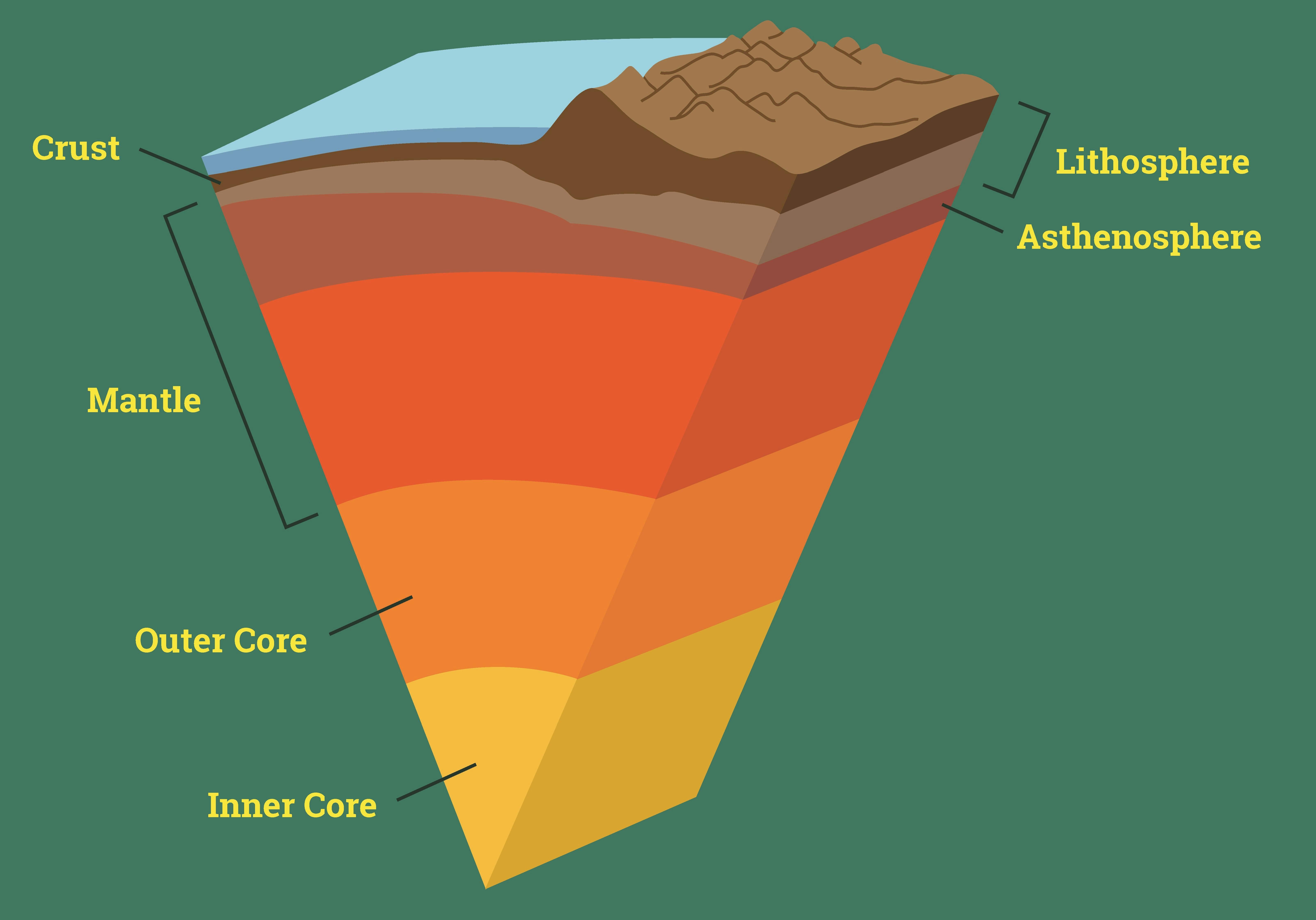
Tectonic plates are made of Earth’s lithosphere, which comprises the crust (Earth’s outermost solid layer) and the underlying uppermost mantle. The composition of the plates varies according to whether they are continental or oceanic. The continental crust is made of lightweight materials in comparison to the dense and heavy oceanic crust. The continental crust and lithosphere are much thicker than their oceanic equivalents. The difference in thickness and density of the oceanic and continental materials explains the difference in their surface elevations. Like icebergs, continents have deep roots inside the earth’s mantle. Plate tectonics and volcanism are an evidence of the dynamic plate that is Earth and its dynamics are confined to the crust and mantle layers. The lower mantle interacts with the outer core, which is liquid and composed of iron-nickel alloys and other elements. The lower mantle is heated from below and thus the outer core also contributes to mantle dynamics. It is the active convection of liquid metal in the outer core that generates the earth’s magnetic field, which extends into space and protects us from cosmic radiation, including charged particles of solar wind. The inner core has an identical composition to the outer core, but it is solid, as demonstrated by the propagation of seismic waves.
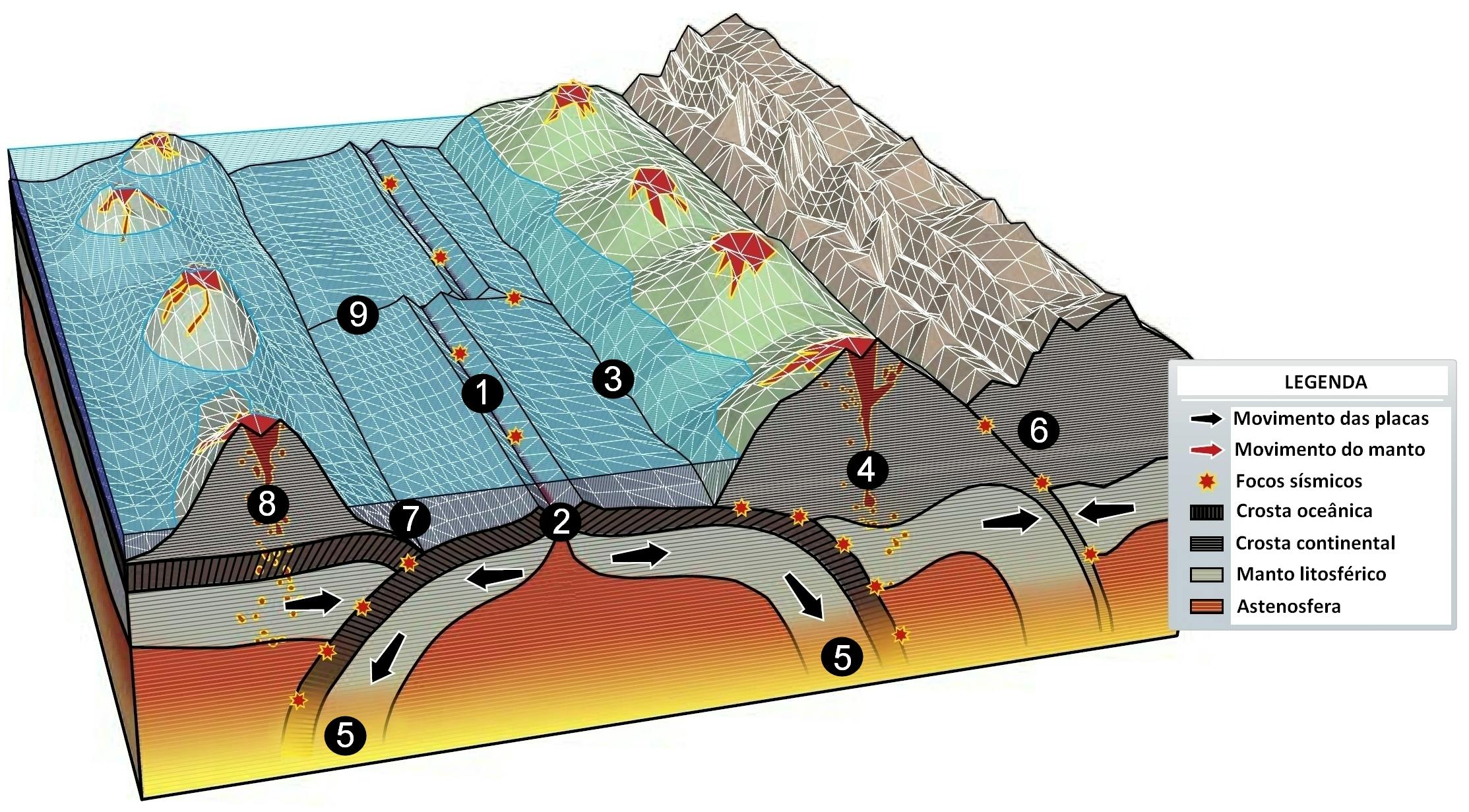
As tectonic plates move past oneanother—colliding, separating, or simply sliding sideways—they create the mountains, valleys, and other “scars” that we see on the surface of the earth. Where plates move apart, along mid-ocean ridges (1), magma ascends to the surface and cools to create new oceanic crust (2). When denser, heavier oceanic plates collide (at 3) against less dense, lighter continental plates (4), the oceanic plates dive below the continental plates into the earth’s interior in a process called subduction (5). Subduction (5) also occurs when two oceanic plates collide (at 7). As the oceanic plate descends into the mantle, it releases water, lowering the melting point of mantle rocks and generating magma, which ascends to the surface. This creates volcanic arcs on oceanic plates (8) and volcanos on continental margins (4). The collision between two continental plates (at 6) leads to the building of huge mountains, due to the shortening and thickening of the lithosphere. Mid-ocean ridges are often offset and connected by transform faults (9). The scars of these faults on a plate are fracture zones (9). Most earthquakes are generated at plate boundaries.
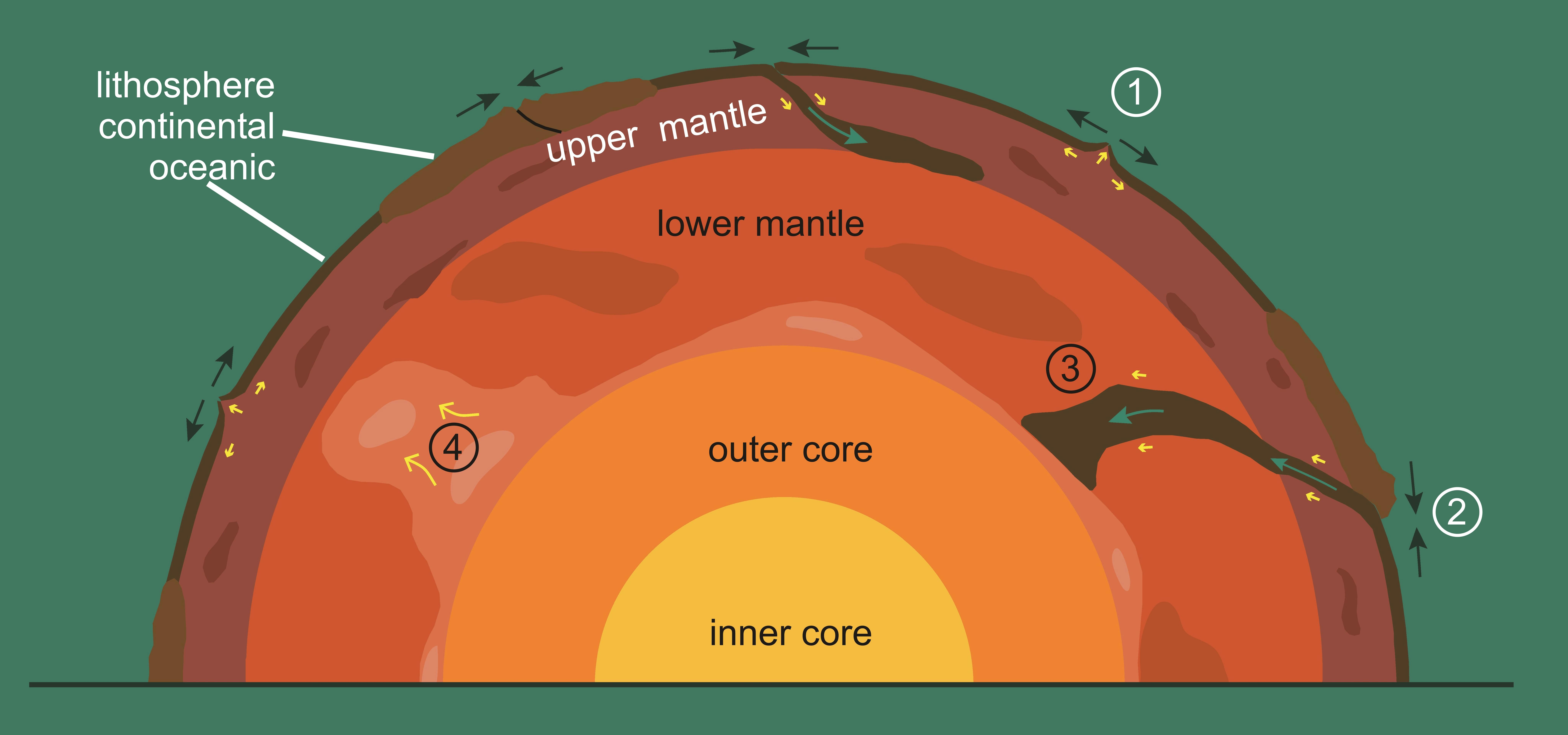
The motion of the tectonic plates that we see at the surface is related to mantle convection. As dense and cold oceanic plates subduct into the mantle (2), they force a downward flow (3). Some plates stagnate at mid-mantle discontinuities, whereas others continue all the way down to the core-mantle boundary (3). Upward flow of material is associated with rising plumes of hot, less dense mantle rocks (4). These plumes can rise both from shallow levels or from deep reservoirs. At mid-ocean ridges (1) plates diverge, opening space for the upwelling of mantle that will create new crust. The details of mantle convection and its interaction with surface tectonic movements remains a matter of active scientific investigation.
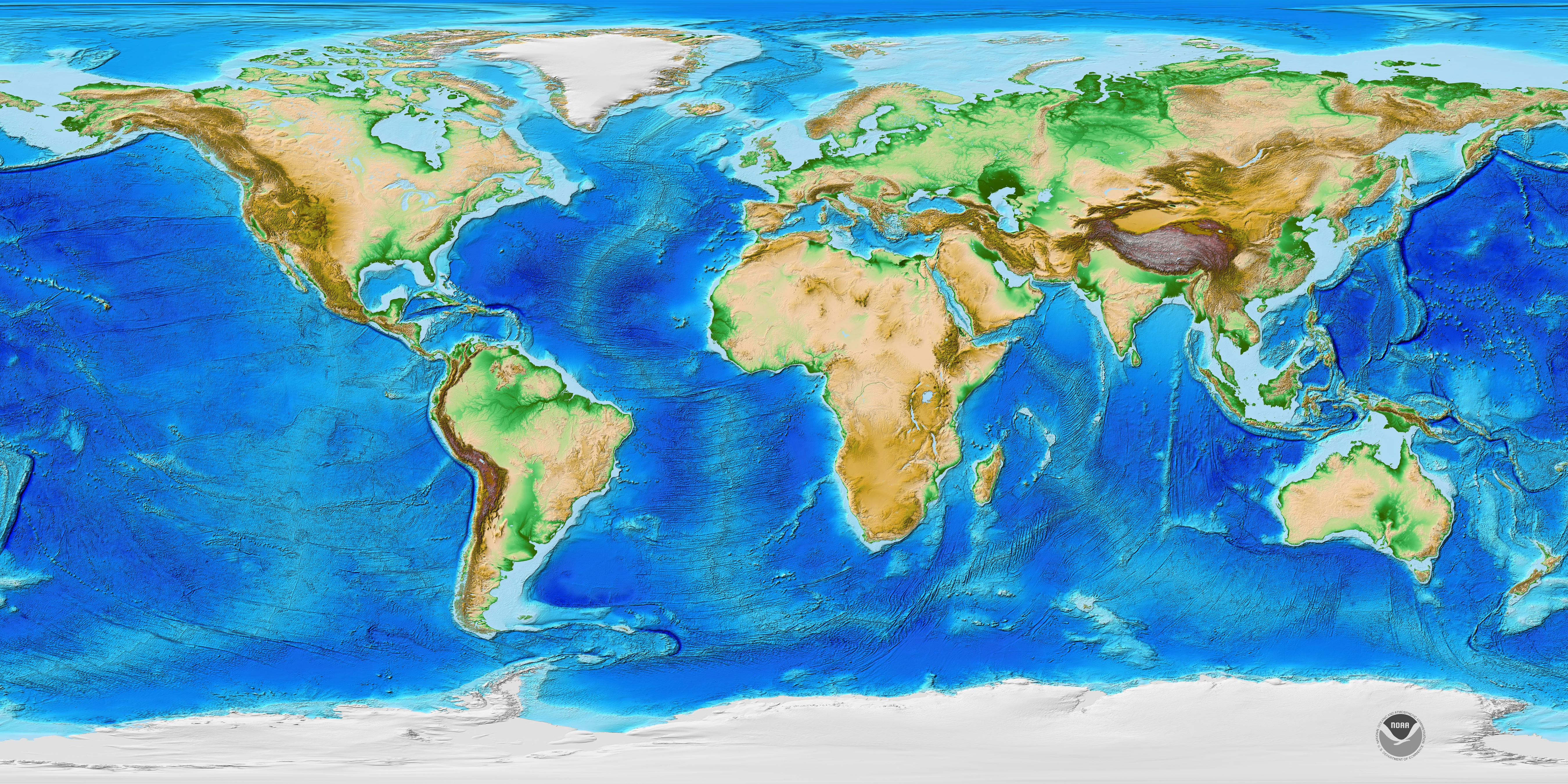
As tectonic plates move past one another—colliding, separating, or simply sliding sideways—they create the mountains, valleys, and other “scars” that we see on the surface of the earth. If we would empty the oceans of the world, most of the plate boundaries could be identified on the relief map.
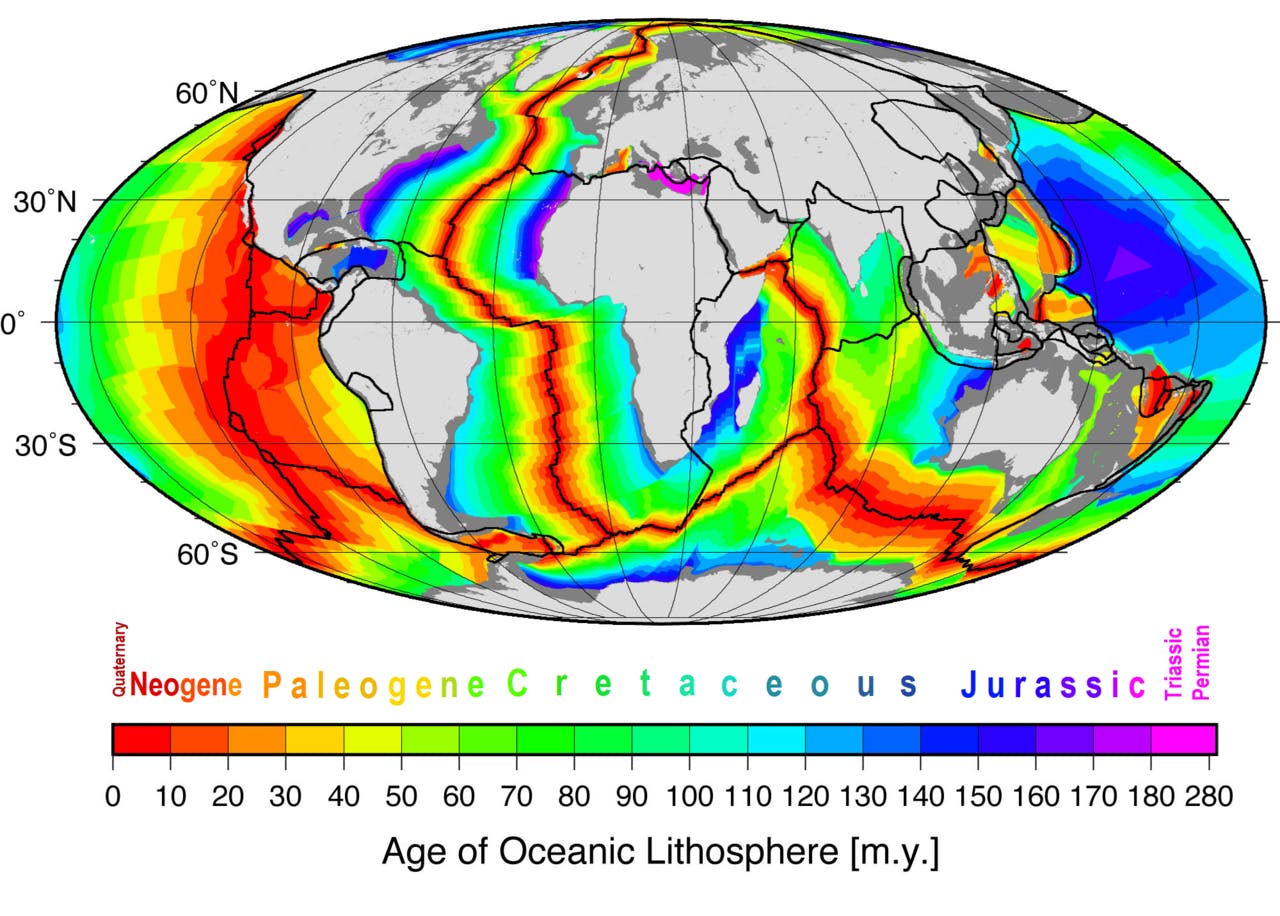
When compared to the age of the earth (4,500 million years) the oceans are very young. The oldest extensive ocean domains are no older than 180 million years. The explanation lies in plate tectonics. All older oceans were already subducted and are now recycling the mantle.
Bibliography
Grotzinger, J. & Jordan, T. H. (2020). Understanding Earth, 8th ed. MacMillan.
Stein, S. & Wysession, M. (2009). An introduction to seismology, earthquakes, and Earth structure. John Wiley & Sons.
Instituto Dom Luiz